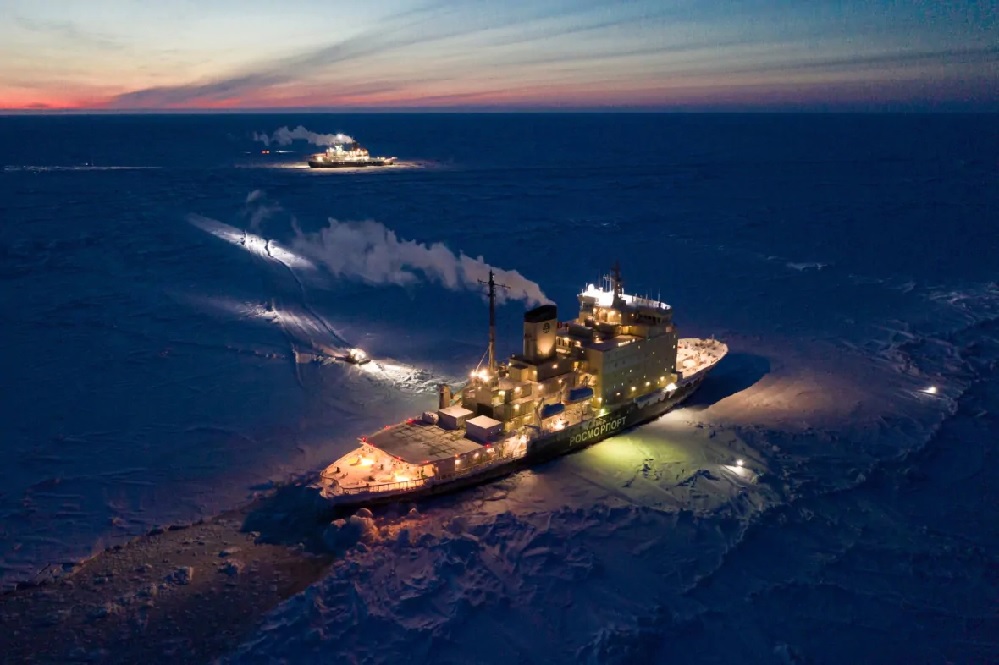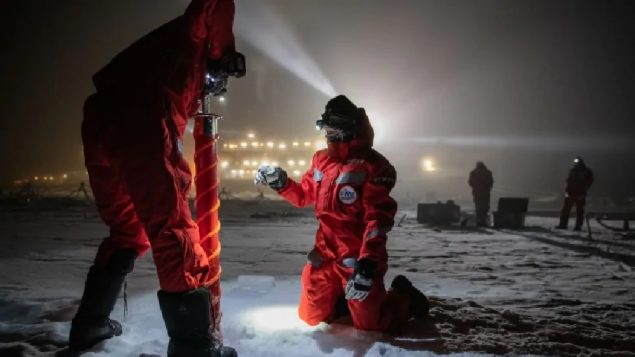Scientific studies and data have shown the Arctic region is warming at a faster rate than most of the rest of the world. They also indicate ice extent has been declining. A new analysis in The Conversation shows it’s also getting brighter and explains why this is a serious concern.
Reduced ice cover means more light into the ocean but that’s not the only source of light, There is more and more artificial light from increased human presence, around and on the relatively shallow Arctic seas. These human sources shine on in the blackness of the normally months long Arctic ‘polar night’.
Algae, the foundation of the Arctic food web, convert sunlight into sugar and fat. This in turn is consumed by tiny zooplankton, and proceed up the food web to fishes, whales, seals, polar bears an so on. Zooplankton, and many other marine creatures are known to rise closer to the surface in darkness to feed, and descend to darker depths during the day to escape predators in the darkness.
So, for decades scientists believed that in the long polar night, that most marine activity came to a near halt as the light and dark cues were gone.
A study of ice loss in 2006 left instruments anchored at the bottom of an Arctic fjord for the polar night and when recovered the following spring, scientists were surprised to find that marine life activity, even seabird foraging, continued with barely a pause in the long darkness.

Icebreakers Kapitan Dranitysn, front, and Polarstern, rear, are pictured in the Arctic ice on Feb. 28, 2020. Research has shown that artificial light has an effect on behaviour of marine life which has taken eons to evolve and adapt to natural conditions. As the Arctic remains ice-free for longer periods, there will likely be many more brightly lit commercial ships, cruise ships, and resource extraction sites. (Steffen Graupner/Alfred-Wegener-Institute via AP)
It is thought now that the moon and aurora borealis give cues in guiding behaviour of all kinds of Arctic life. This raises new concern that stronger artificial light from human activity will mask these natural cues and affect behaviours that have evolved over millions of years to adapt to the conditions while the relatively sudden arrival of human artificial light leaves no time to adapt.
Lights from increased human habitat, and from brightly lit commercial and cruise ships, from resource development and increased habitation have all added light to the ocean surface but light is also reflected back onto the surface from the sky.
A study in the Arctic off Norway found the light beams from of a research vessel caused strong behaviours of fish and zooplankton to a depth of 300 metres. Some species swam toward the artificial beams of light, while others fled violently away. This leads to further questions about how ‘natural’ the data is concerning marine species and habits collected by scientists onboard brightly lit research vessels
How ecosystems will be affecting by more shipping, and resource extraction in regions of long darkness is also a question.
Warming waters invite new species.
With less ice more light is reaching down and promoting the movement northward of plants such as kelp. While kelp does exist in patches in Arctic waters, large kelp forests do not as yet. Scientists wonder about the ecological pros and cons as kelp grows northward.
These question arise also in combination with ever warming waters and new species arriving. A great concern is that of commercial ships which collect balast water in one region of the world, with those small creature and microrganisms. to be dumped in the north as they take on cargo such as iron ore. Even the large tourist vessels can carry species on their hulls which can release sperm and eggs into the waters where it is entirely possible they may survive in the warming water.
The effects of new invasive species are unknown, but historically, non-native species have almost always caused harm to native species.
Scientists say with these new inputs, the Arctic seas and life in the Arctic itself could be changed quite dramatically within the lifetimes of people alive today.
Additional information-source







For reasons beyond our control, and for an undetermined period of time, our comment section is now closed. However, our social networks remain open to your contributions.